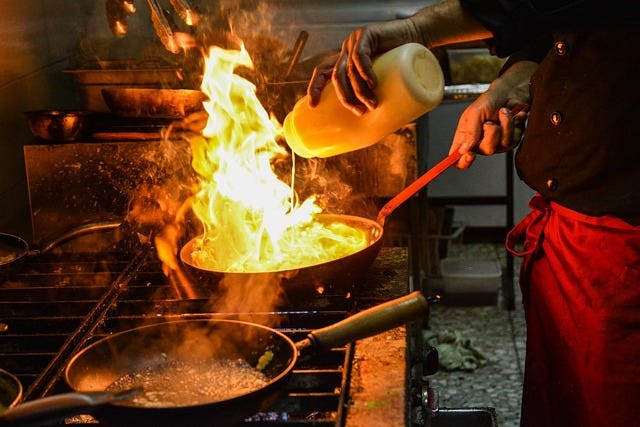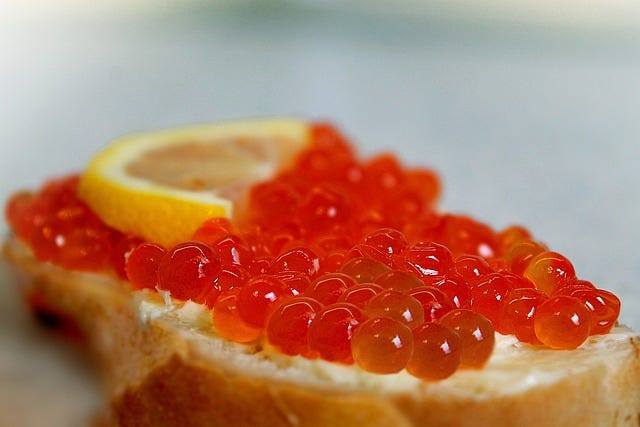Cooking methods throughout history have come a long way since the caveman was roasting a mammoth over an open fire. Today we have modern ovens, stoves, and other kitchen appliances to assist us in the kitchen yet the science behind cooking remains relatively the same, apply heat to a raw product until the desired temperature has been reached either for flavor profile or to kill bacteria, done. Can it really be that simple? I believe the answer to that question is yes.
Although cooking food at the base level is very simple, some chefs are redefining what it means to “cook” your food.
Chefs are constantly pushing the boundaries of flavor, texture, and presentation to create unique and exciting dishes. One of these innovative methods is molecular cuisine, a culinary movement that combines the principles of gastronomy and the science of food to transform raw ingredients into remarkable culinary creations.
Some would argue that cooking is not just the process of applying heat to a raw product but more of a complex scientific undertaking that involves the interaction of various elements. I believe this idea to also be true. Yes, there is a definite science behind cooking an intricate meal that’s more than just food to nourish your body. Some chefs are artists and some are scientists, both have something great and unique to offer the world.
Understanding the science behind cooking is crucial for chefs who seek to manipulate flavors, textures, and chemical reactions in their dishes. One of these fundamental principles is known as the Maillard reaction, which occurs when proteins and sugars undergo a complex series of chemical reactions when exposed to heat. This reaction gives rise to the rich flavors and aromas associated with caramelization and browning in foods, color equals flavor.
Another critical aspect in understanding food science is the concept of emulsions, which play a vital role in creating smooth textures and stable sauces such as hollandaise or mayonnaise. Emulsions occur when two immiscible substances, such as oil and water, are combined with the help of an emulsifying agent, such as egg yolks, lecithin, or Xanthan gum, which can also act as a thickening agent.
You’re probably now asking yourself, what the hell is molecular gastronomy? Well, let’s find out.
Molecular gastronomy is a branch of food science that explores the physical and chemical transformations that occur during cooking. It employs forward-looking techniques and tools to create brand-new textures, surprising flavor combinations, and breathtaking presentations.

Some of the techniques that are employed in molecular gastronomy are Spherification, a method that involves transforming liquids into small spheres that burst with flavor when consumed. Chefs can create delicate, edible spheres that mimic caviar or other small orbs by combining a liquid with sodium alginate and submerging it in a calcium chloride bath.
With this method you can cross what I call the flavor-texture barrier, by that I mean that you can have a flavor that doesn’t traditionally match up to the new texture. One example of this would be something like steak caviar. Through spherification, you can encapsulate the flavor of a steak through the medium of broth or consommé into the caviar-like orbs mentioned above.
Another very popular technique is sous vide cooking, which translates to “under vacuum”. This technique involves cooking vacuum-sealed ingredients in a precisely controlled water bath, ideally with an immersion circulator at a low and consistent temperature for an extended period.
Sous vide ensures even cooking, preserves flavors, and enhances tenderness in meats and vegetables. With sous vide cooking you can cook a steak to the perfect temperature, hold it there for a few hours, and then sear the outside of that steak for perfect caramelization.
Foams, emulsions, and the use of liquid nitrogen allow for creative presentations and unexpected flavor and texture combinations, creating amazing and often expensive culinary experiences.
Gastronomy and molecular cuisine represent a marriage of culinary arts and scientific exploration but for some chefs taking a more traditional approach these techniques aren’t the end all be all.
Traditional cooking methods offer a sense of connection to heritage, authenticity, and the comfort of familiar flavors. They often rely on simple tools and techniques, allowing for a closer relationship with the cooking process and a deeper understanding of ingredients.

Fermentation, a process that uses microorganisms, such as yeast or bacteria to convert sugars into alcohol, acids, or gases is a method that has been used for centuries and is used for various traditional foods like bread, cheese, yogurt, sauerkraut, kimchi, and miso. Smoking is another traditional method of cooking or preserving foods such as fish, meat, and cheese. These methods not only extend the shelf life of foods but also add complex flavors and textures to dishes.
Ultimately, the choice between traditional and modern cooking methods depends on personal preferences, cultural contexts, and the desired culinary outcome. Whether one prefers the nostalgic charm of traditional methods or the convenience and precision of modern techniques, both have their merits and can coexist harmoniously in the culinary world.
You should look to the past to know how to proceed into the future and look to the future to appreciate the past, this idea applies to cooking just as much as it does to everyday life.






Fantastic summary of a wide range of "new school" cooking techniques! I remember being blown away when I saw my first blowtorch in a kitchen (ceviche was still a few years down the road back then).
Very informative and enjoyable read. Thank you. When I was a young girl, maybe ten years old, I started making bread. I loved the whole process ,especially watching the dough rise and kneading it. At that age, I was quite fascinated with bread making.